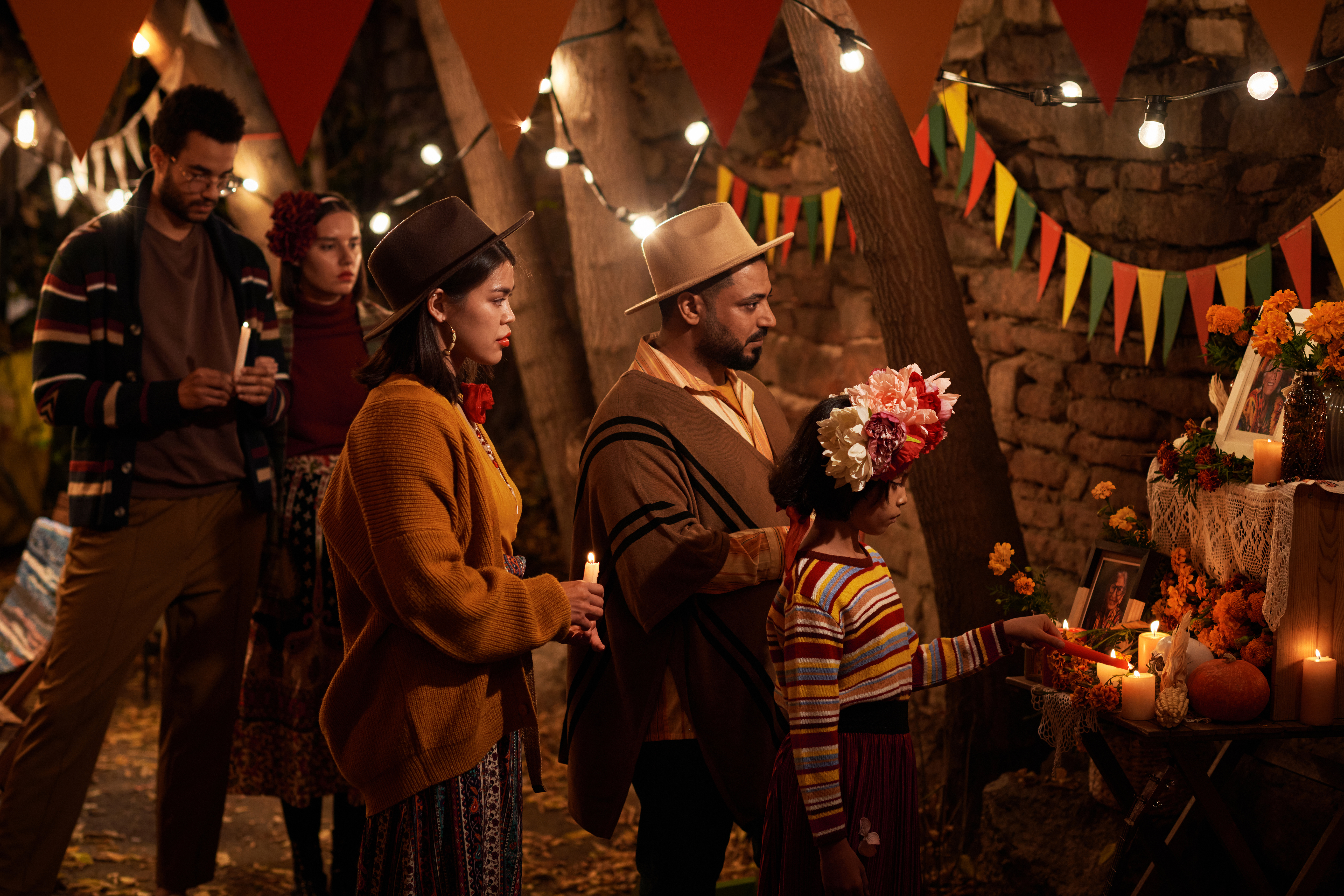11 Culture Shocks That Mysteriously Only Bother American Tourists Abroad
Traveling abroad is a profound experience that often leaves American tourists with a newfound appreciation for the world's diversity. However, this journey is not without its surprises, as cultural norms and traditions abroad can be both fascinating and bewildering. This article delves into 11 uncommon culture shocks that often puzzle American tourists, exploring the mysterious and sometimes humorous ways these differences manifest. From dining etiquettes to public behaviors, each section will unravel a unique aspect of cultural diversity, providing insights into why these practices exist and how they challenge preconceived notions. By understanding these cultural nuances, travelers can enhance their global perspective and embrace the richness of human diversity.
1. Dining Etiquette: The Art of Eating with Precision

Dining etiquette varies significantly across the globe, and American tourists often find themselves puzzled by foreign customs. In Japan, for instance, slurping noodles is not only acceptable but encouraged, as it signifies enjoyment and appreciation of the meal. This contrasts sharply with the American emphasis on quiet dining. Similarly, in parts of the Middle East, using the left hand for eating is considered impolite, rooted in historical hygiene practices. Such customs challenge American tourists to rethink their dining habits and adapt to new environments. Understanding these practices not only prevents social faux pas but also enriches the travel experience by providing a deeper connection to the local culture.
2. Personal Space: The Invisible Bubble

Personal space is another aspect of culture that often surprises American tourists. In countries like Italy or Brazil, people tend to stand closer during conversations, a stark contrast to the more reserved approach in the United States. This proximity can feel intrusive to Americans used to maintaining a larger personal bubble. However, this cultural difference is not about discomfort but rather a reflection of warmth and friendliness. Learning to navigate these social cues can be challenging but ultimately rewarding, as it opens doors to more genuine interactions and understanding of local customs. Embracing these differences allows travelers to engage more authentically with the people they meet.
3. Tipping Practices: The Gratuity Conundrum

Tipping is a common practice in the United States, where it is customary to leave a gratuity for service workers. However, this is not the norm everywhere. In countries like Japan and South Korea, tipping can be seen as rude or unnecessary, as it implies that the staff are not paid adequately. In Europe, service charges are often included in the bill, leaving American tourists confused about whether to tip or not. Understanding these differences is crucial for travelers to avoid awkward situations and respect local customs. By adapting to these practices, tourists can navigate dining and service experiences with confidence and cultural sensitivity.
4. Public Transport Etiquette: The Commuter's Code

Public transport systems worldwide have their own set of unwritten rules that can perplex American tourists. In cities like Tokyo, silence is golden, and phone calls are frowned upon, promoting a peaceful commuting environment. Conversely, in many European cities, lively conversations are common, and public transport is a social space. These differences highlight the cultural values placed on public conduct and community interaction. For Americans used to more casual and sometimes loud public spaces, adjusting to these norms can be a learning experience. Observing and respecting these practices not only avoids social blunders but also enhances the travel experience by immersing tourists in local daily life.
5. Fashion Norms: Dressing the Part

Fashion is a universal language, yet its dialects vary widely across cultures. American tourists often encounter unexpected fashion norms that can be both intriguing and confusing. In many European cities, dressing well is a form of respect and self-expression, with locals often opting for more formal attire than the casual styles prevalent in the United States. In contrast, in some Middle Eastern countries, modesty is key, with specific dress codes that tourists must adhere to. Understanding these fashion norms is essential for travelers to blend in respectfully and avoid drawing unwanted attention. By embracing local styles, tourists can show appreciation for the culture and enhance their travel experience.
6. Greetings and Gestures: The Language of Body

Greetings and gestures are fundamental to communication, yet they vary significantly across cultures. American tourists may find themselves perplexed by the intricate rituals of greeting in different countries. In France, a kiss on both cheeks is a common greeting, while in Thailand, a respectful wai, a slight bow with hands pressed together, is customary. These gestures reflect the cultural values of warmth, respect, and friendliness. Understanding and adopting these practices can be challenging but rewarding, as they foster deeper connections with locals. By learning the nuances of greetings and gestures, travelers can navigate social interactions with ease and cultural awareness.
7. Public Behavior: The Social Norms

Public behavior is another area where cultural differences can surprise American tourists. In some cultures, public displays of affection are common and accepted, while in others, they are considered inappropriate. For instance, in many Western countries, holding hands or hugging in public is normal, but in parts of Asia and the Middle East, such actions might be frowned upon. Additionally, the concept of queuing varies, with some cultures having a more relaxed approach to forming lines. Understanding these differences is crucial for travelers to avoid misunderstandings and show respect for local customs. By observing and adapting to these norms, tourists can engage more positively with their surroundings.
8. Time Perception: The Clock's Rhythm

Time perception is a fascinating cultural aspect that often puzzles American tourists. In many Western cultures, punctuality is highly valued, and being late is seen as disrespectful. However, in countries like Spain or Italy, a more relaxed attitude towards time prevails, with social events often starting later than scheduled. This difference can be challenging for Americans used to precise scheduling. Understanding these cultural attitudes towards time can help travelers manage their expectations and adapt to the local pace. By embracing a more flexible approach, tourists can enjoy a more relaxed and immersive travel experience, free from the constraints of rigid timetables.
9. Communication Styles: The Subtle Art of Conversation

Communication styles vary widely across cultures, often leaving American tourists puzzled by the nuances of conversation. In some Asian cultures, indirect communication is preferred, with emphasis on harmony and avoiding confrontation. This contrasts with the more direct and assertive communication style common in the United States. Understanding these differences is crucial for effective cross-cultural communication. For Americans, adapting to these styles can be challenging but rewarding, as it fosters deeper understanding and collaboration. By learning to read between the lines and appreciate subtle cues, travelers can engage more meaningfully with locals and enrich their travel experience.
10. Work–Life Balance: The Cultural Equation

Work–life balance is another area where cultural differences can surprise American tourists. In countries like France or Denmark, there is a strong emphasis on maintaining a healthy balance between work and leisure, with generous vacation policies and shorter workweeks. This contrasts with the often work-centric culture in the United States. Understanding these differences can be eye-opening for American tourists, highlighting the cultural values placed on well-being and quality of life. By observing these practices, travelers can gain insights into the local lifestyle and appreciate the diverse approaches to work and leisure. Embracing these differences can also inspire a reevaluation of personal priorities and values.
11. Festivals and Celebrations: The Joy of Tradition

Festivals and celebrations offer a vibrant glimpse into a culture's traditions and values. American tourists often find themselves captivated by the unique festivities they encounter abroad. From the colorful Holi festival in India to the solemnity of the Day of the Dead in Mexico, these events showcase the rich tapestry of cultural expressions. Understanding the significance of these celebrations can enhance the travel experience, providing insights into the history, beliefs, and customs of a community. By participating in these events, tourists can connect with locals on a deeper level and create lasting memories. Embracing these cultural celebrations allows travelers to appreciate the diversity and beauty of the world.
Culture shocks are an inevitable part of traveling abroad, offering American tourists a unique opportunity to expand their horizons and challenge their assumptions. By understanding and embracing these cultural differences, travelers can navigate foreign environments with greater ease and respect. Each culture shock explored in this article provides valuable insights into the diverse ways people live, communicate, and celebrate life. By approaching these differences with an open mind and a willingness to learn, American tourists can enrich their travel experiences and foster meaningful connections with people from around the world. Ultimately, embracing the unfamiliar is the key to a truly transformative travel experience.








